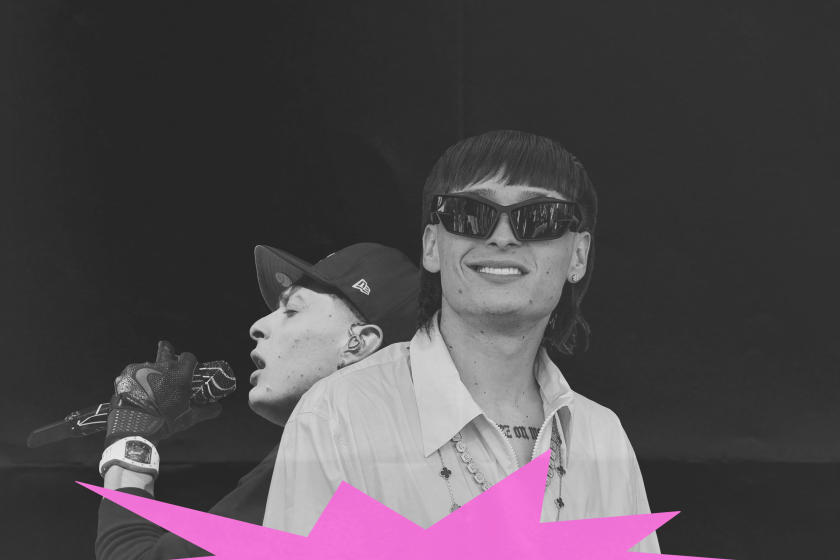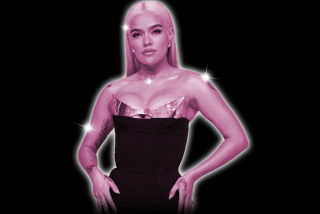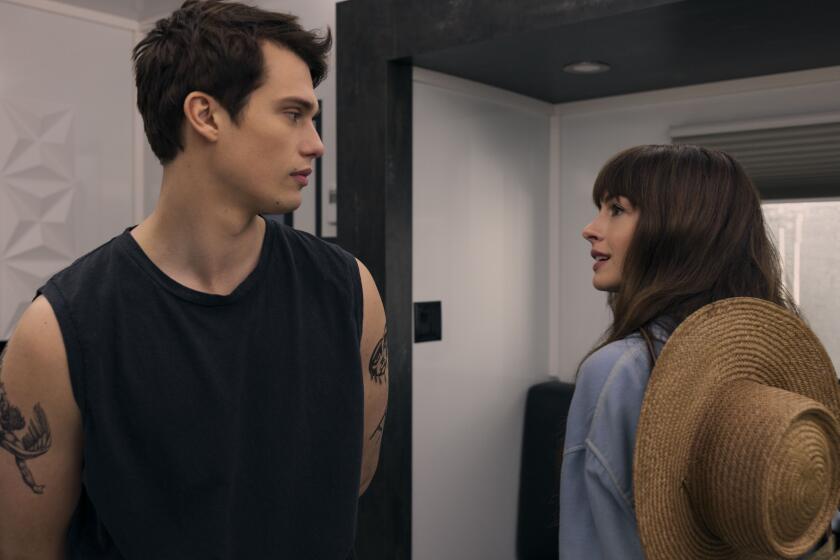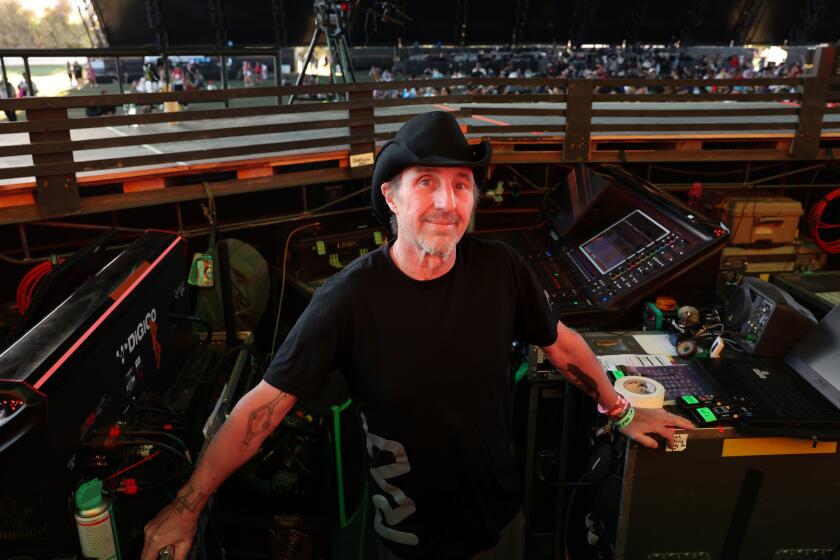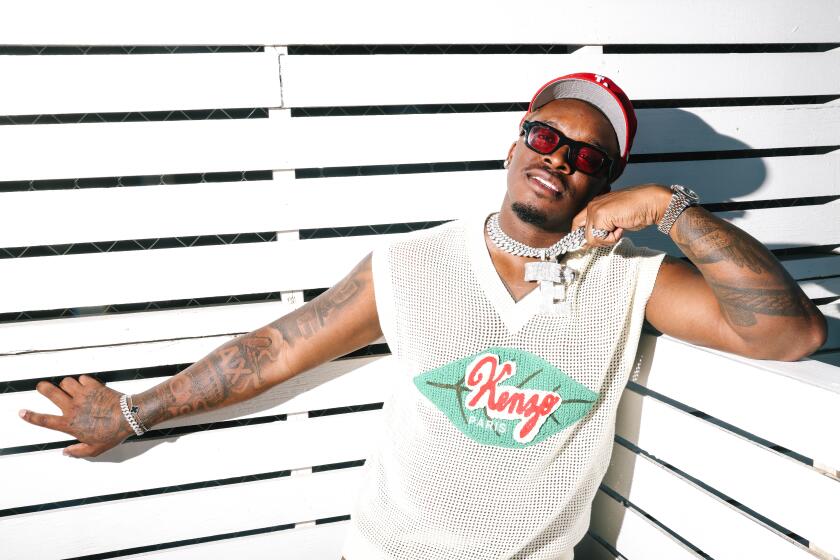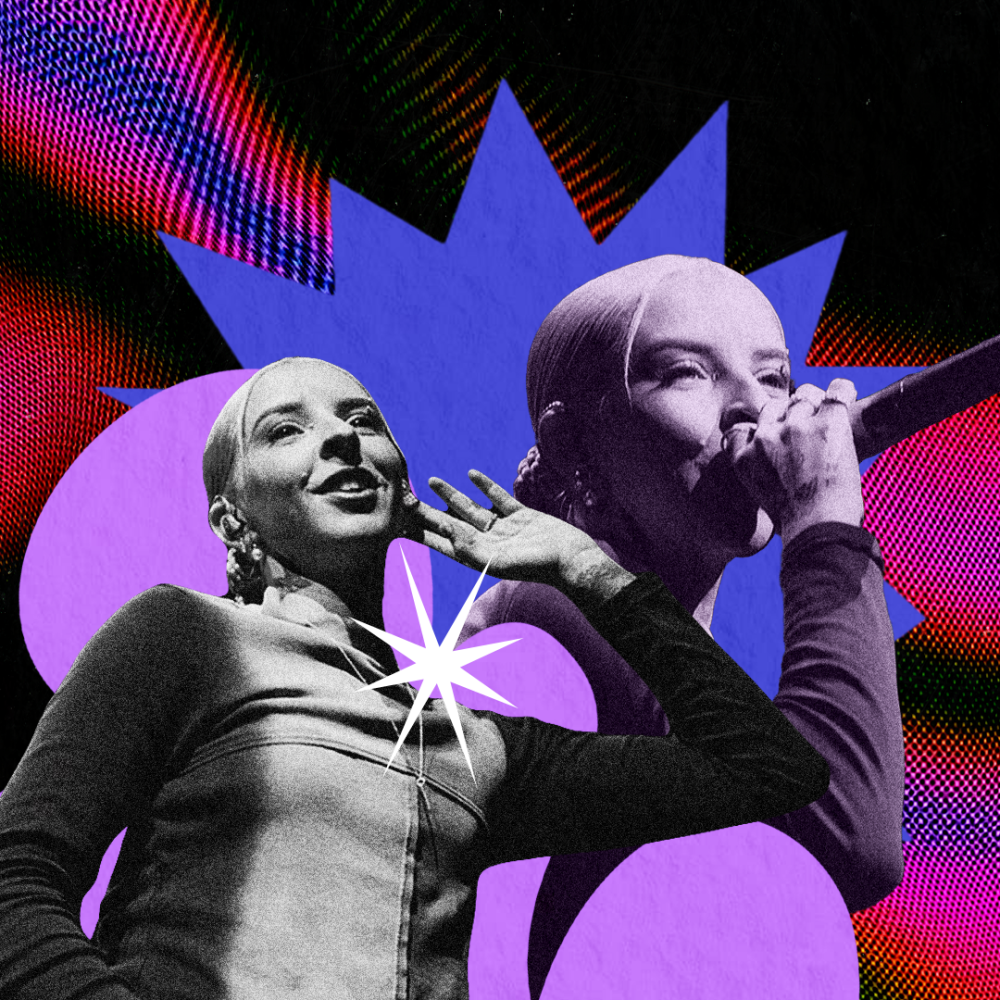
Young Miko might have touched down in Austin, Texas, but she’s still on Pacific time.
The 26-year-old rapper from Puerto Rico has been holed up in Los Angeles preparing for the biggest month of her life. First up is the release of her long-awaited debut album, “att.,” a 16-track effort out Friday that she describes as “the evolution of Young Miko.” Then, before she has a chance to catch her breath, she’ll be accomplishing a milestone she’s been dreaming about for years: a set at the Coachella Valley Music and Arts Festival.
Right now though, while those achievements are tantalizingly close, Miko is getting in the right head space for her performance at the Rolling Stone’s Future of Music Showcase at South by Southwest. While her crew buzzes around the house she’s rented in the ritzy Westlake neighborhood, she relaxes on a sofa, surprisingly calm.
“People are already lined up for blocks outside the venue,” says her publicist, Sofia.
“No f— way,” Miko says, her eyes widening with excitement. “Are there videos? I want to see. I love when a crowd is hype like that.”
While ending his SXSW performance, Peso Pluma told the crowd he does not care about commentary from social media or the press.
She’s ready to give those concertgoers her all, even if she’s not the main attraction — the showcase’s headliner is Peso Pluma, the brightest star in the galaxy that is musica Mexicana. In Young Miko’s view, the showcase is an opportunity to win over parts of the audience that might not even know who she is.
It’s the same mind-set she plans to bring to Coachella.
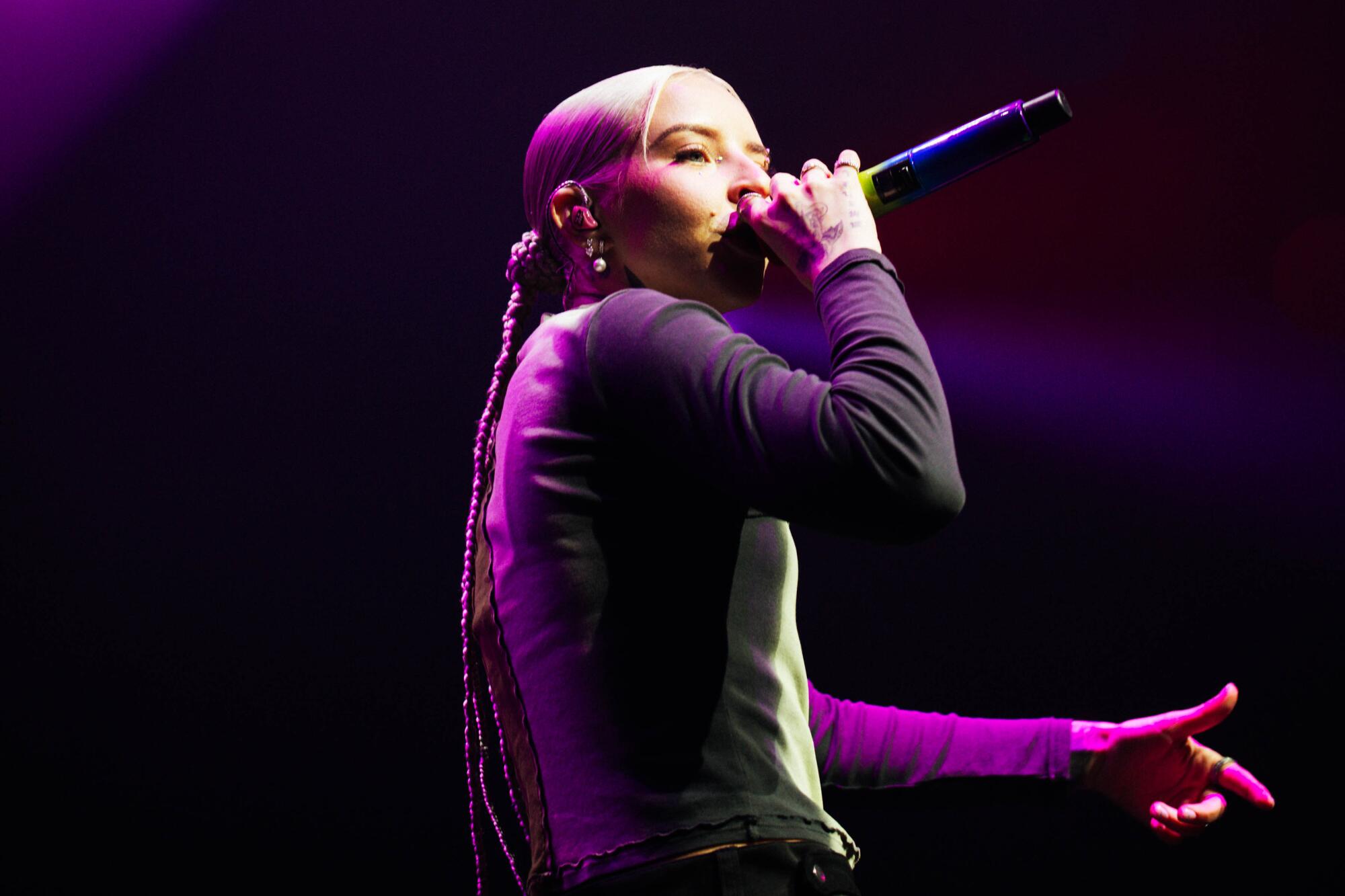
Last year, Miko braved the masses at the festival grounds in Indio for the first time to see Bad Bunny. She remembers it as a magical experience — he was the first Spanish-language artist to headline, and even though she’d gotten the chance to perform with him the previous year, she was excited to witness this moment of history. “I had literal goosebumps,” she says.
But she also recalls hearing a few remarks from people who were less enthusiastic about seeing the performer. One person near her cracked a joke about not paying to see “some rabbit.”
“I remember looking at him like ‘Don’t be such an a—,’” she says, still heated at the memory. “This is the biggest artist in the world, and he’s headlining Coachella as the first Puerto Rican to ever do this.”
“I want people to leave that show like, ‘Who the f— was that tattooed, anime-looking a— Latin lesbian girl? I loved her show!’ That’s the goal.”
— Young Miko
It’s become a core memory for Miko, one that she’s returned to a lot over the last few months. If there were people in the audience who didn’t know Bad Bunny, a global superstar at the top of his game, then how many wouldn’t know her? In a way, that realization has been freeing. The way she sees it, this performance will be an opportunity to pick up new fans and make a splash.
“My mind-set is I’ve gotta get on that stage and kill that s—,” she says, laughing. “I might not have huge crowds singing back at me, but I’m gonna leave a huge first impression. I want people to leave that show like, ‘Who the f— was that tattooed, anime-looking a— Latin lesbian girl? I loved her show!’ That’s the goal.”
Born and raised in the coastal town of Añasco, Puerto Rico, María Victoria Ramírez always had an artistic streak. She scribbled doodles and poems in her notebook while she attended Catholic school in nearby Mayagüez, eventually writing songs that she posted to SoundCloud under the Young Miko moniker. To pay for studio time, she worked as a tattoo artist.
In the summer of 2021, she broke out with “105 freestyle,” a trap bop that featured her clever Spanglish rhymes and playful delivery. Within a year, she had booked collaborations with other buzzy acts such as Villano Antillano; released her first EP, “Trap Kitty;” was invited to perform her hit “Riri” with Bad Bunny at his concert in San Juan; scored her first entry on Billboard’s Hot 100 with a collaboration with Feid on “Classy 101”; and teamed up with Bad Bunny on “Fina,” a track off el conejo malo’s most recent album, “Nadie Sabe Lo Que Va a Pasar Mañana.” The breeziness of her flow and her lyrical versatility have made her an in-demand collaborator.

Plenty of other artists in Miko’s position would’ve been midway through their second album at this point in their career. But she doesn’t like to be rushed. “Att.” had technically been in the works since before “Trap Kitty,” and was initially planned to be released near the end of 2023. Coming off of such a massive year, it would’ve made sense to cap things off with her debut album, but Miko and her team are big on vibes, and as their deadline approached, the vibe wasn’t right.
“We had already been waiting for so long, so what’s a little longer?” she told her team.
Then, new songs started pouring out of her. Bizarrap invited her to his studio to record one of his famous music sessions (their song shot to the top of the charts in Argentina and Spain). Last month, she stepped out of her comfort zone to record a bachata track — “En Esta Boca” — with Kany García, one of her idols.
“Everything just started lining up,” she says. “This is why we had to wait, and now, it’s the right moment.”
Miko’s been going through a metamorphosis of sorts, one spurred in part by her experience touring with Karol G. Across their seven-city run together, Miko experienced what it was like to perform in arenas for the first time. A fan of Karol’s before she joined the tour, she saw the Colombian singer in a whole new light, studying the way she worked a crowd, the way she incorporated visuals into her set and the way she prepared for her shows.
“She took me under her wing,” says Miko. “It was one of the best experiences ever. I didn’t want it to end.”
Get the Latinx Files newsletter
Stories that capture the multitudes within the American Latinx community.
You may occasionally receive promotional content from the Los Angeles Times.
A few years ago, during one of her biggest shows to date, the rapper felt everything slow down around her for a few seconds. She took in the scene — thousands of people screaming and singing along to lyrics she’d written — and realized: “I understand why some artists get lost in drugs,” she recalls. “They’re just chasing what I was feeling right then. But I guarantee you, there’s no drug that gives you that feeling. It’s a euphoria you can’t explain.”
Before she even set foot on stage at Austin’s Moody Theater, the SXSW crowd was going wild screaming her name. When she finally appeared, everyone got on their feet, dancing along to hits “Tempo,” “Chulo, pt. 2” and nearly drowning out her voice as they sang along to “Classy 101.” By the time she finished her set, the whole room was chanting “Otra, otra, otra!”
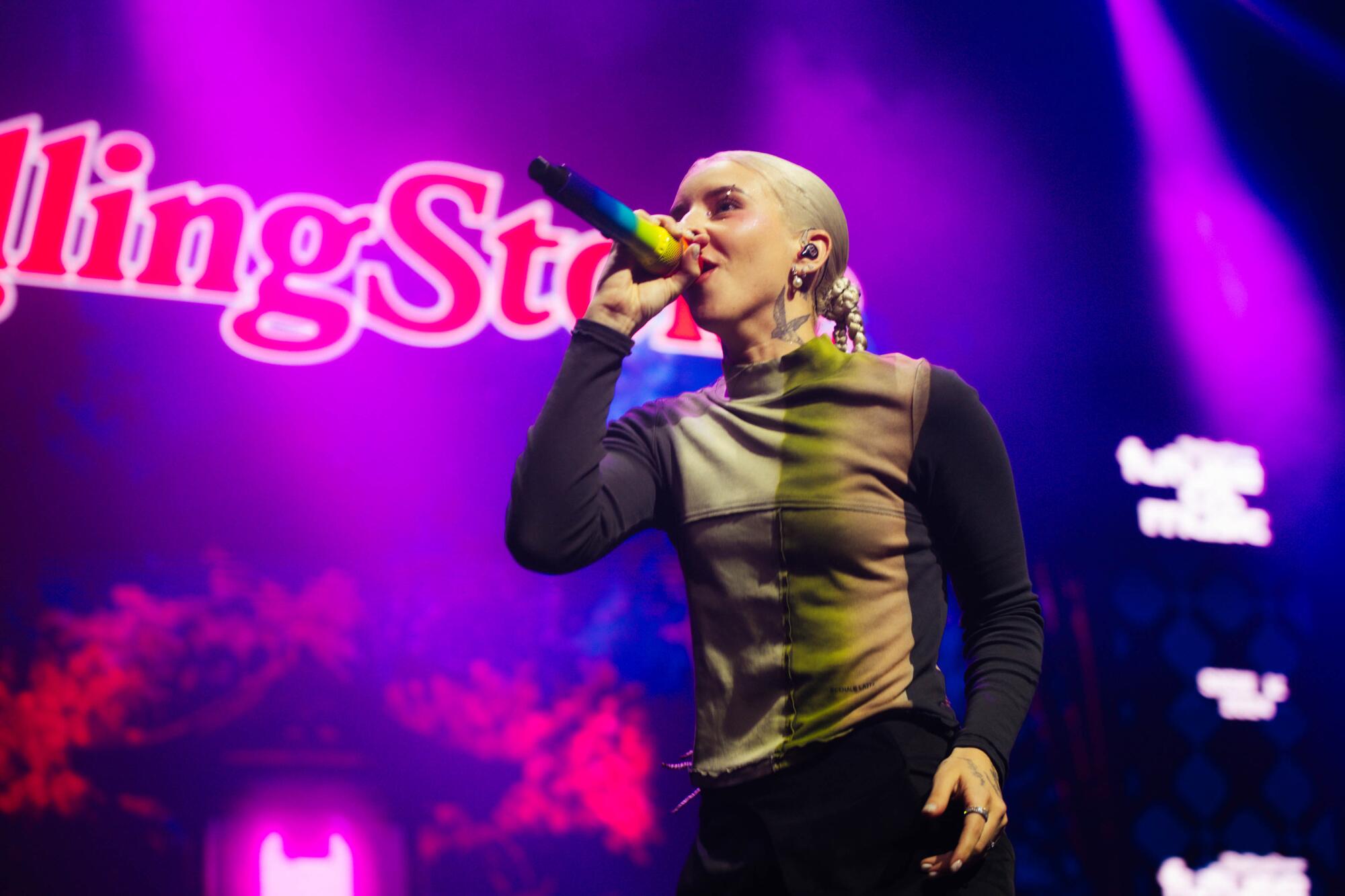
Now, she’s learned — with help from artists such as Karol G — how to come down from that high. After a show, she might do breathing exercises, or even a light cardio workout, just to tire herself out. “If I don’t, I’ll never sleep,” she says. “My mind is still going a million miles an hour.”
It helps that all of this is still new enough to Miko. She still remembers what it’s like to be a fan — the person rushing over to a friend’s house to get ready for a show, blasting a playlist of the artist they were about to see in the car and waiting in the crowd for the lights to go out. It’s been a drastic change to go from that to sound checks and vocal warmups, but experiencing the former has helped her appreciate the latter.
“I had the opportunity to live both sides of the coin,” she says. “It’s so much fun, but there’s just nothing like performing on stage.”
As she’s drawn bigger and bigger crowds, her life before Young Miko has become more of a memory, something that’s harder to recapture when she does go back home. “Going on tour made me appreciate what I don’t have anymore,” she says, struggling to find the right words to distill an experience very few people can understand. “I used to literally be a nobody. I was a regular a— West Coast girl in Puerto Rico. Then all of a sudden, this.”
It’s something that’s forced her to mature, to grow up and take stock of what she has to be grateful for — a family that supports her, a community that’s proud of her and countless fans who hype her up. She’s also eternally relieved that none of this success came earlier.
“This happening in my 20s was a blessing,” she says. “I’ve been asked before, ‘If you went back in time, would you try to get here sooner?’ And I’m like, ‘No!’ I got to be a teenager with privacy. I got to grow up not in front of the cameras. I love that I had that opportunity.”
Part of being thrust in the public eye has also meant realizing that she’s become some people’s role model, especially because of the lack of queer representation in the urbano scene. She remembers Ricky Martin coming out in 2010 and Kany García doing the same in 2016. Things aren’t perfect now, but alongside acts such as Anitta, Tokischa, and Villano Antillano, Miko is part of a wave of queer women who have risen to the top of the charts, penning lyrics that are just as raunchy, braggadocious and unapologetic as their male counterparts.
“I’ve had these people in my life who are so important to me, I can’t wrap my head around the fact that I’m that somebody for someone else,” she says. “That just makes me so happy. It lets me know that I should keep doing what I’m doing. It motivates me, but I also recognize that it’s a huge responsibility. But it’s a responsibility I’m so glad to take on.”
‘I realized that this video with Karol could be the “Girls Like Girls” for this generation. I’m so here for that. Like I needed to be a part of it.’
— Young Miko
On some level, she says, she’s just always been wired that way. She remembers being a teenager when she realized that her younger brother was gay. Though she hadn’t come out to their parents yet either, she knew having that conversation with them would make things easier for him when he was ready. “He’s my favorite person in the world,” she says. “Obviously, I wanted to come out, but it was a bonus that I could help someone so important in my life. And luckily, I have great parents who have always been fans of what I do. So I try to think, if my parents approve, why the f— should I care about what some random thinks?”
Earlier this year, when the opportunity came to play Karol G’s love interest in the video for her song, “Contigo,” Miko realized it was a chance to pay things forward. The concept brought her back to another moment from her teen years, when Hayley Kiyoko released the “Girls Like Girls.” The subsequent video went viral on Tumblr, serving as a queer awakening for Miko and countless others in 2015. “I realized that this video with Karol could be the ‘Girls Like Girls’ for this generation,” Miko says excitedly. “I’m so here for that. Like I needed to be a part of it.”
For now, there’s still so much that Miko wants to do. She’s still manifesting dream collaborations with artists such as Doja Cat, Shakira, or, her pie-in-the-sky dream: Juanes. Even if it all disappeared overnight though, she’s happy with what she’s accomplished so far. “If I were to quit music tomorrow, I’d be fine. I would have left something behind.”
“But,” she teases with a cheeky laugh. “I think I’m gonna be here for a while.”
More to Read
The Latinx experience chronicled
Get the Latinx Files newsletter for stories that capture the multitudes within our communities.
You may occasionally receive promotional content from the Los Angeles Times.
